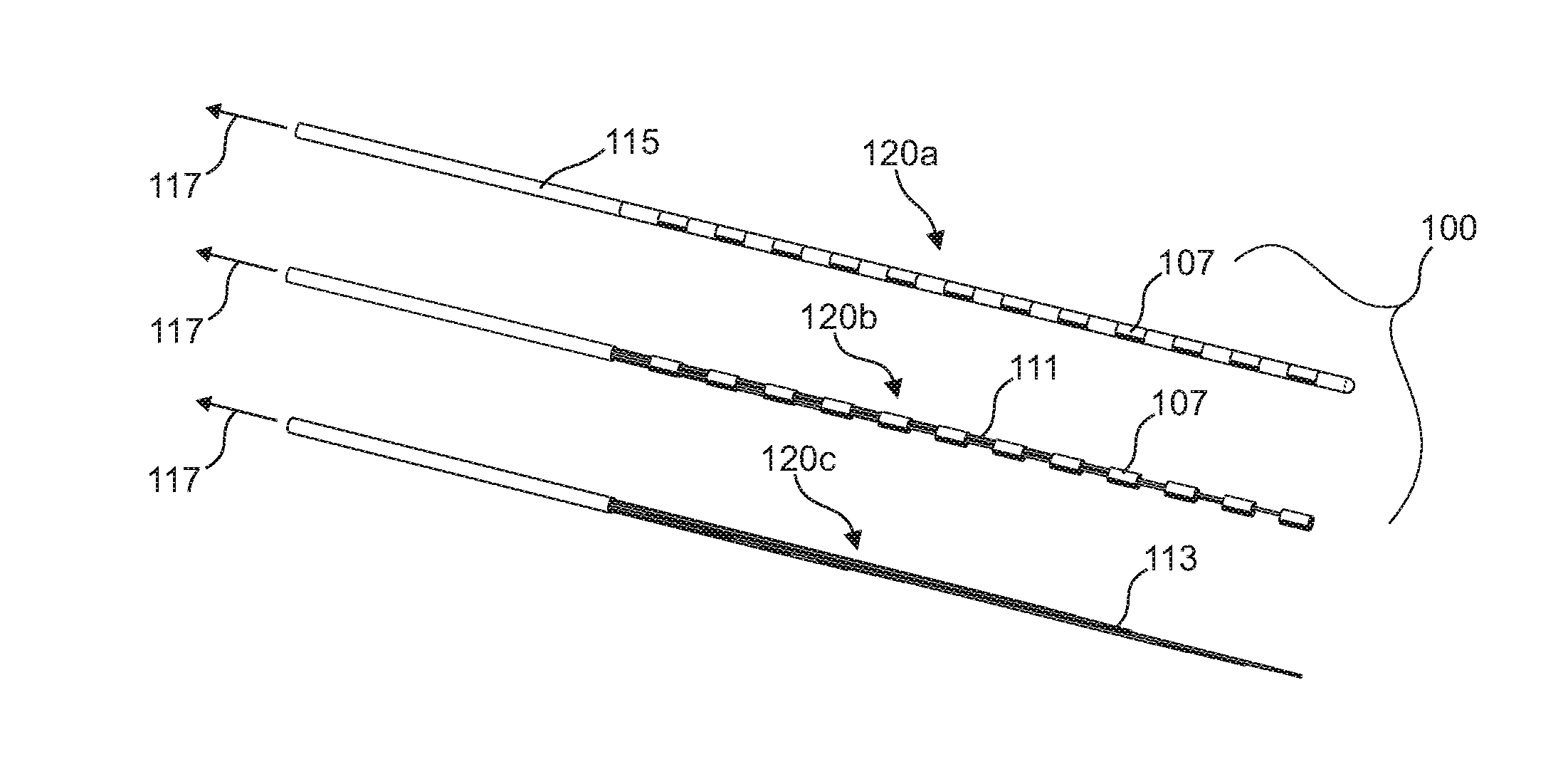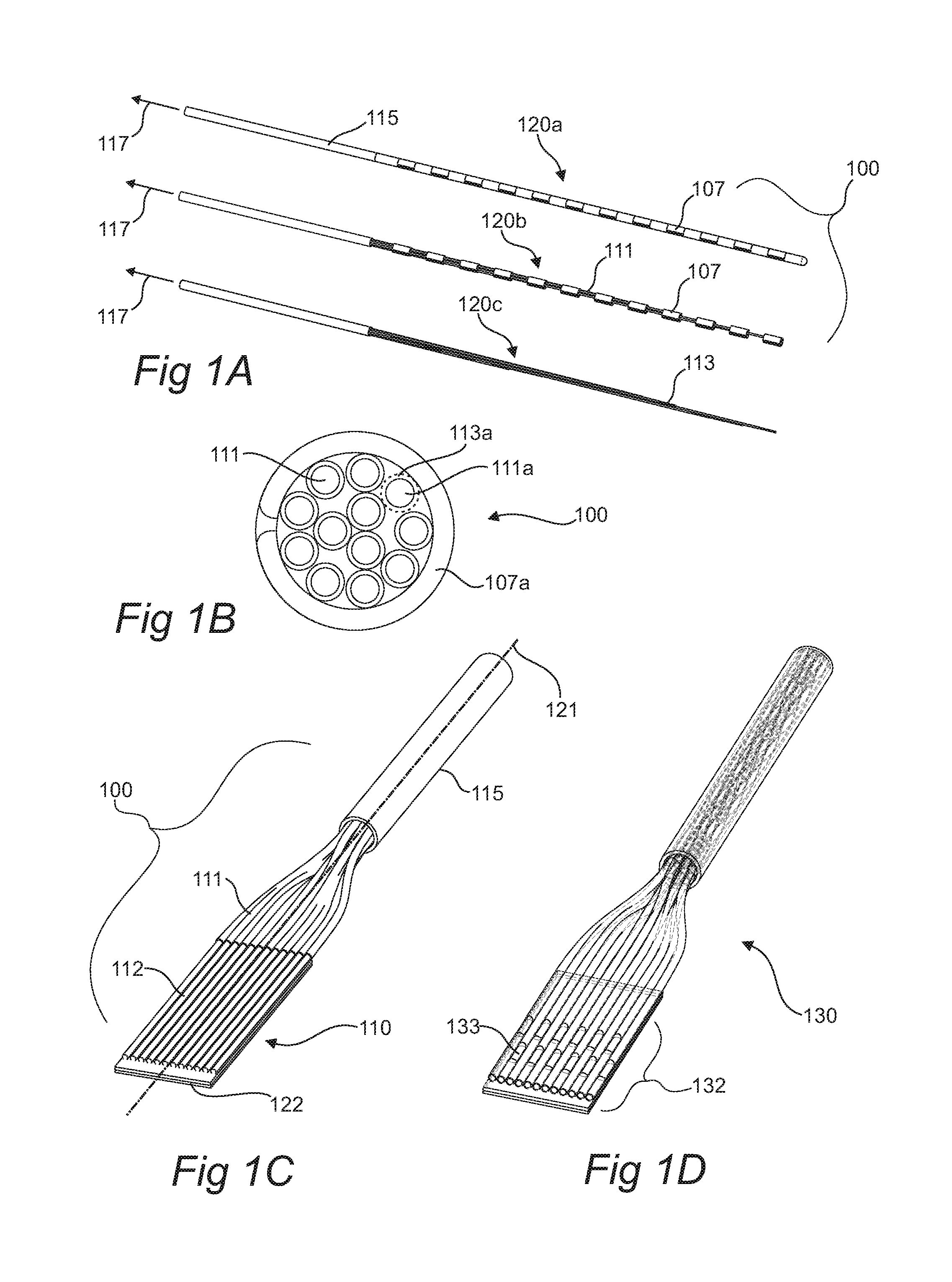Elongated Conductors and Methods of Making and Using the Same
- Summary
- Abstract
- Description
- Claims
- Application Information
AI Technical Summary
Benefits of technology
Problems solved by technology
Method used
Image
Examples
example 1
Production of Elongated Conductor with 12 Conducting Members
[0120]An elongated conductor with 12 conducting members is formed. The conducting members are formed from a copper alloy (with nominal diameter of approximately 25 μm) with a first polyimide insulation layer (with thickness of approximately 3.5 μm) and a second polyvinyl butyral binding layer (with thickness of approximately 3 μm). The conducting members are arranged along a horizontal plane with approximately 0.5 mm spacing between individual conducting members, and the proximal and distal encoded windows are formed in the polyimide and polyvinyl butyral layers with an ultraviolet laser ablation source. In this non-limiting instance, the distal encoded windows are patterned so as to form a 2D array of windows (for later attachment to a planar component as a single connector) with windows substantially oriented to one side of the working plane, and the proximal encoded windows are patterned so as to form a substantially 1D ...
example 2
Production of Elongated Conductor with Distal Split Configuration
[0124]The same procedure is followed up until the step of attaching the distal region to the support. Instead the distal region is broken into two groups of 6 conducting members, and each of the groups is attached to a separate support so as to form a split arrangement. The total width of each split arrangement is 238 μm (40 μm pitch between conducting members). An additional 4 mm long length of the split regions is clamped before proceeding with the winding step outlined in Example 1. The split distal patterns are then attached to each side of an HDI flex circuit, so as to form a robust interconnect with a narrow overall width of 245 um. An ultra-thin walled polymer sheath is placed around the distal region to bridge across the hypotube to form a low profile distal part of the assembly. The distal region is potted with a silicone adhesive to form a secure structure at the distal end of the assembly.
example 3
Elongated Conductor with Flexible Shield
[0125]An elongated conductor with 12 conducting members and a flexible shield is formed. The conducting members are formed from a copper alloy (with nominal diameter of approximately 25 μm) with a first polyimide insulation layer (with thickness of approximately 3.5 μm) and a second polyvinyl butyral binding layer (with thickness of approximately 3 μm). The conducting members are arranged along a horizontal plane with approximately 0.5 mm spacing between individual conducting members, and the proximal and distal encoded windows are formed in the polyimide and polyvinyl butyral layers with an ultraviolet laser ablation source. In this non-limiting instance, the distal encoded windows are patterned so as to form a 2D array of windows (for later attachment to a planar component as a single connector) with windows substantially oriented to one side of the working plane, and the proximal encoded windows are patterned so as to form a substantially 1...
PUM
 Login to View More
Login to View More Abstract
Description
Claims
Application Information
 Login to View More
Login to View More - R&D
- Intellectual Property
- Life Sciences
- Materials
- Tech Scout
- Unparalleled Data Quality
- Higher Quality Content
- 60% Fewer Hallucinations
Browse by: Latest US Patents, China's latest patents, Technical Efficacy Thesaurus, Application Domain, Technology Topic, Popular Technical Reports.
© 2025 PatSnap. All rights reserved.Legal|Privacy policy|Modern Slavery Act Transparency Statement|Sitemap|About US| Contact US: help@patsnap.com



